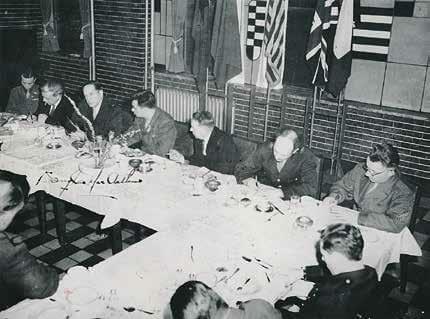Issue:

MACARTHUR’S ON THE RECORD statement at the Club (the forerunner of the FCCJ), saying that it was time for an end of the Occupation, was only one part of his message. He further called for a peace treaty to be negotiated, stating that the military task had been completed, the political phase was approaching completion and that continuing the Occupation would have negative effects on Japan’s economic recovery. It was a turning point that resulted in the San Francisco Peace Treaty of 1952, which brought the Occupation of Japan to a formal end.
Supreme Commander for the Allied Powers (SCAP), MacArthur had declined earlier invitations to speak at the Club to avoid setting a precedent. In fact, his first invitation had been to attend the Nov. 1945 formal opening of the Club in the five story Marunouchi Kaikan, located between SCAP’s headquarters in the Daiichi Seimei building and Tokyo Station. Though repairs had yet to be completed on the war scarred building, it went on to provide hostel services for some 170 correspondents, who called it “No. 1 Shimbun Alley” for the next ten years.
The General had apparently refrained from visiting the Club until he had something important to communicate to the correspondents.
— Charles Pomeroy

